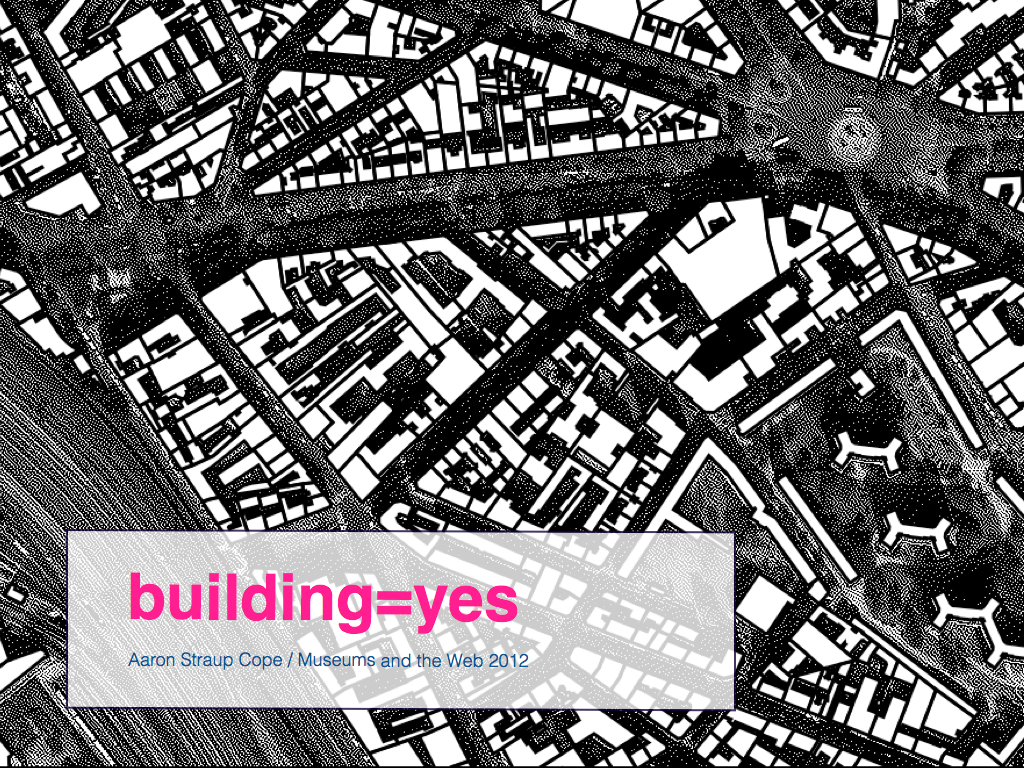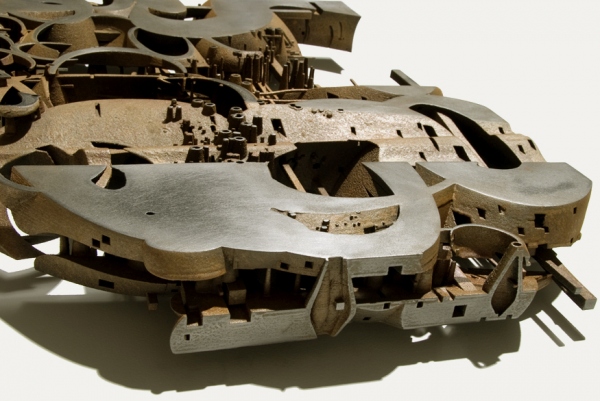The second paper I presented was about the building=yes project. It is very much a technical paper going over the nuts and bolts of extracting the data (from OpenStreetMap), indexing it and designing custom map tiles to help make sense of the sheer volume of data. Rather than try to cram all that information in to a 15 minute talk I instead talked about the overall value – the purpose – of creating these kinds of registries and tried to highlight the importance of being patient. It’s not always clear what will come out of these kinds of projects but what is clear is that stable, linkable things that can hold hands with one another are the foundation on which all the interesting stuff will be built.
Tag: theory
The Power of Fear in Networked Publics
Increasingly, the battles over identity are moving beyond geek culture into political battles. The same technologies that force people into the open are being used to expose people who are engaged in political speech. Consider, for example, how crowdsourcing is being used to identify people in a photograph. It just so happens that these people were engaged in a political protest.
Radical transparency is particularly tricky in light of the attention economy. Not all information is created equal. People are far more likely to pay attention to some kinds of information than others. And, by and large, they’re more likely to pay attention to information that causes emotional reactions. Additionally, people are more likely to pay attention to some people. The person with the boring life is going to get far less attention than the person that seems like a trainwreck. Who gets attention – and who suffers the consequences of attention – is not evenly distributed.
And, unfortunately, oppressed and marginalized populations who are already under the microscope tend to suffer far more from the rise of radical transparency than those who already have privilege. The cost of radical transparency for someone who is gay or black or female is different in Western societies than it is for a straight white male. This is undoubtedly a question of privacy, but we should also look at it through the prism of the culture of fear.
Conversations with Lebbeus Woods and Thom Mayne
If you’re exploring just the level of organizational types because that’s usually what we do—we organize the world and we literally concretize it. We bring a certain order. That order is a response to how we locate ourselves in the world in philosophical terms—in the total sense; all the disciplines….
I’m looking for…or I am challenging…or I am myself searching for what that means with those organizational forms. I am looking for something that I see as more contemporary and that is connected to the 21st century thinking and it seems as though it’s moving from the mechanical to the biological. There is a thrust that is becoming clear to us in terms of where we look for our ideas, right? We are paralleling in terms of the modern notion of who we are.
I’m looking for something that is discursive, that is understandable, that doesn’t depend totally on personal facility, meaning it’s private—because these are collective projects. I work with another person that is actually drawing the specific nature of the model.
And I would have said that the formation of these are first and foremost the operational strategy, which is the most powerful thing. Then, after that, it’s some combination of my critique; my development of that process and my engagement with the person actually mechanically putting them together. So it is a very complicated, already collective process of even how they come together and it’s not by me at all.
Megastructures are the Shopping Malls of the Avant-Garde
The avant-garde is a paradoxical state. In order to exist, it relies on its incongruous condition of being both fundamentally contemporary and ahead of its time. A conceptual palimpsest, the avant-garde requires writing its history over its own past keeping a vulnerable balance between present problems, and possible future solutions. All about contextualizing the perfect timing, what happens when the avant-garde goes out of sync; when its solutions are overlooked for being too premature, or ridiculed for being delayed?
Edward Scissorhands
This post appeared in a previous blog and is here for posterity’s sake.
Or, how suburbia [and by extension America] loves conformity and percieved safety
This paper discussed the movie Edward Scissorhands [1990] and the reflection of religion, the corporation and society has on the formation of the city. Polemical in nature, it is not a denouncement of religion, instead it acknowledges the powerful role of religion in society, and how this important part of life shapes our space [and place] in the world.
Edward Scissorhands is the collection of fables and fairy tales not only from the collective history of man, but also from recent American experiences. The classic Frankenstein and Pinocchio story is contrasted with the distinctly American thrill of the new and the allure of progress with the paranoia of the other. The highly stylized neighborhood does not cover the daemons of distrust and isolation that are so eloquently played to by the “Christian” fundamentalist, nor does the blind search for success cover the fractures in the interpersonal relationships of the characters. In the last review, even love cannot triumph over the power of conformity.


